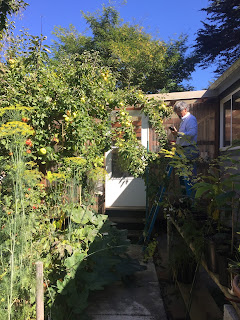Now, here's the tough part - six months ago I found out that I am severely allergic to soybeans in every form and even in minute amounts. Soy is in everything...literally everything. It is hidden in foods you would never imagine and is known by many names. But that's a post for a different time.
Enter my new hero - chickpea miso! I've tried two different brands and this one is by far the best. I can't even remember what "real" miso tastes like. And it even fools my Japanese husband, Takashi.
Sansho Miso
1/4 cup sansho berries, crushed or coarsely chopped
3/4 cup miso
1/2 cup sugar
1/4 cup mirin
1/4 cup sake
dash of sesame oil optional
Mix miso, mirin, and sake in a small saucepan and place over low heat. Add sugar and stir to dissolve. Add sansho. Increase heat to medium and boil gently for about 7 minutes. Remove from heat and add a splash of sesame oil if desired. As noted above, this can be thinned with warm water to desired consistency. Enjoy!
 |
| Miso eggplant |
 |
| Miso pickles |
 |
Sansho miso dip with fresh vegetables
Blackberry-banana-beet green smoothie on the side
|























































